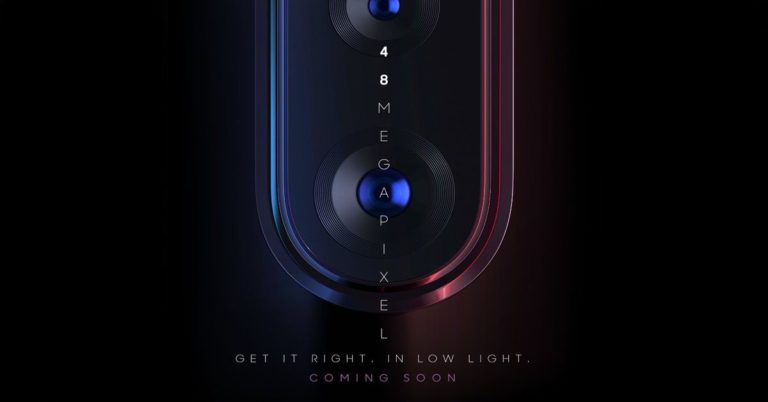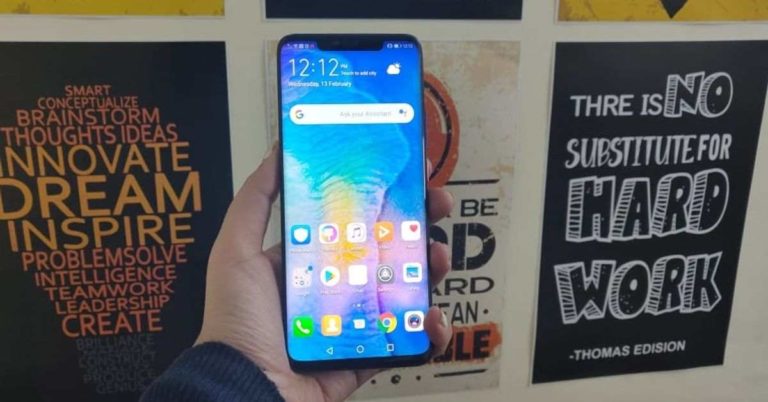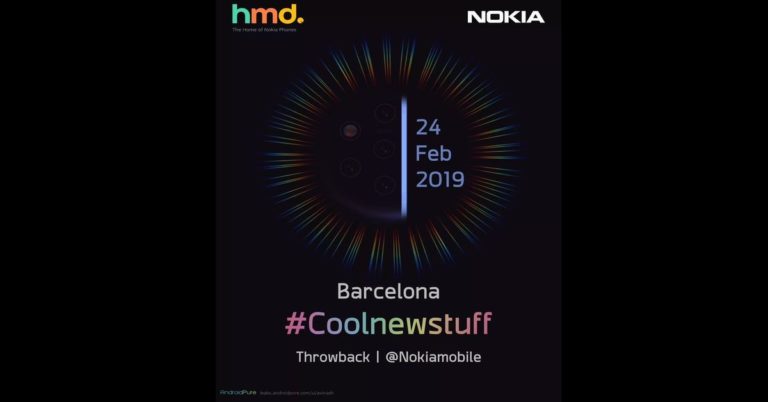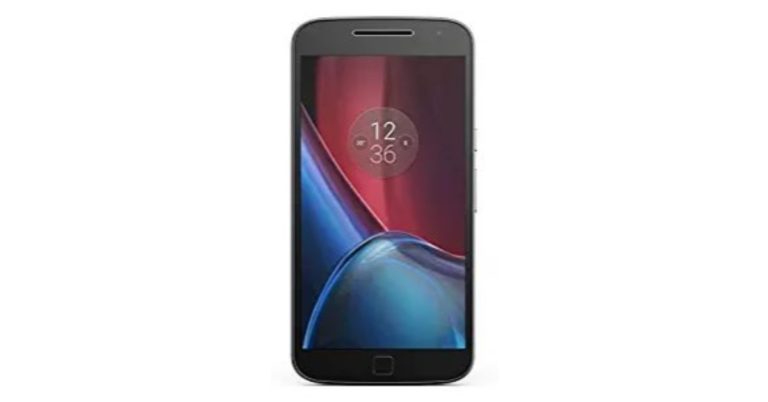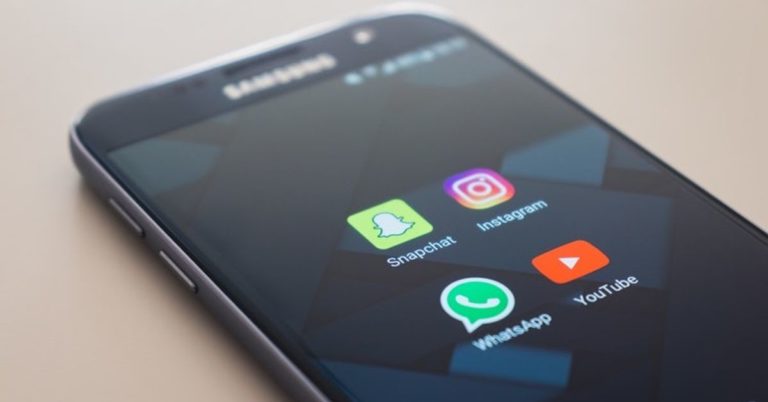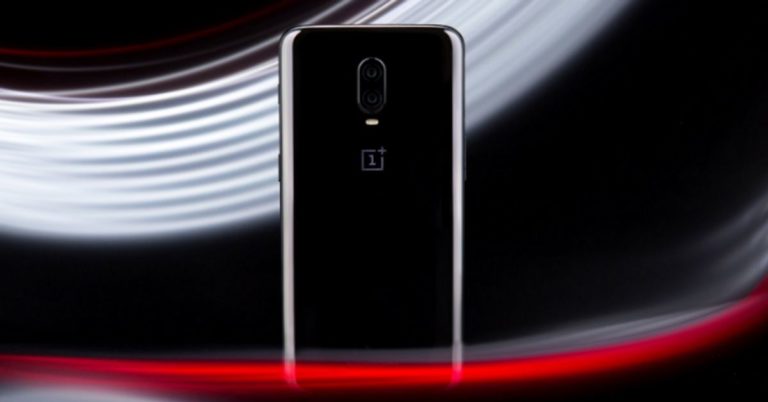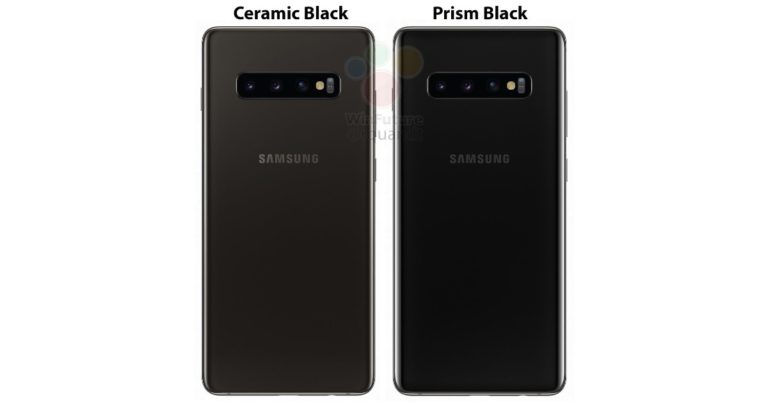Oppo’s Fantastic Days sale goes live: Upto Rs 5,000 discount on smartphones
Oppo F11 Pro to launch soon in India, will come with a 48MP primary camera
Speaking further about the upcoming device‘s camera, Oppo has said that in order to get clear images in dimly lit areas, its F11 Pro smartphone will come with Super Night Mode feature. The Super Night Mode feature will work like Oppo’s AI Ultra-Clear Engine which, according to the company, optimizes the camera experience of the device by including AI Engine, Ultra-clear Engine, and Color Engine. Other than this, the mode in Oppo F11 Pro will be able to recognise scenes and will be adept in image-stabilization during long exposure, low-light performance, and skin brightening. We should mention that this week, technology website 91mobiles also shared an alleged press image of the Oppo F11 Pro. In the image, Oppo F11 Pro can be seen sporting a full-screen display and does not come with a selfie camera on the front panel. This can mean that the device may come with a pop-up selfie camera like Vivo NEX.Brilliant Portraits in Low Light with the 48 MP Camera. Coming Soon. #OPPOF11Pro pic.twitter.com/AsJrOCYEh4
— OPPO India (@oppomobileindia) February 13, 2019

Huawei Mate 20 Pro review: High-end performance
In This Article
Design and Display
Everything about Huawei Mate 20 Pro‘s design is premium. The smartphone looks absolutely stunning with its curved display and gradient metallic back panel. The two merge with each other seamlessly at the thin edges. At first, it may remind you of the Samsung Galaxy S9 or Galaxy S9+, but Huawei Mate 20 Pro does have a personality of its own. Huawei has said that its flagship device comes with a ‘hyper-optical pattern’ on the glass that enhances the grip of the user. It also reduces the number of fingerprints that the smartphone catches while being used. We have to admit that Huawei Mate 20 Pro does not catch as many fingerprints as other glass smartphones. Over that, we – found it to be less slippery. Considering we almost accepted the fact that all smartphones with glass bodies are fingerprint magnets and can easily slip, Huawei Mate 20 Pro – made a mark by not being either. While the front is dominated by the display that comes with a notch on top and an on-screen fingerprint sensor, the back panel has shades of three colours on it—Blue, Purple and Black. The lightest of all shades, Blue, starts from the top, followed by Purple at the middle and Black towards the bottom. The rear panel houses the square camera module that has three sensors and an LED flash. At the bottom is where the Huawei branding can be found. We loved the three-tone pattern on metallic back panel of the device. Also, Huawei makes its flagship stand out with the square camera module. During our time with the smartphone, it didn’t catch any scratches, and we think that’s a big plus.
The power and the volume rocker buttons are placed on the right edge of the smartphone and we loved how Huawei has made the power button Pink. The colour is in contrast with the shades used on the rest of the smartphone’s body. But then, instead of looking out of place, it actually makes the smartphone look more stylish. The bottom edge houses the USB Type C port along with the SIM tray and IR emitter is placed at the top. You would notice that Huawei Mate 20 Pro does not have a 3.5mm headphone jack or a speaker grille. This is because Huawei has used the USB Type-C port as an outlet for sound and the earpiece for audio playback in the smartphone. However, we should mention that this doesn’t deteriorate the quality of sound on the Mate 20 Pro, although if you try to listen to music while charging your smartphone, the sound is not as loud as it is otherwise.
While the front is dominated by the display that comes with a notch on top and an on-screen fingerprint sensor, the back panel has shades of three colours on it—Blue, Purple and Black. The lightest of all shades, Blue, starts from the top, followed by Purple at the middle and Black towards the bottom. The rear panel houses the square camera module that has three sensors and an LED flash. At the bottom is where the Huawei branding can be found. We loved the three-tone pattern on metallic back panel of the device. Also, Huawei makes its flagship stand out with the square camera module. During our time with the smartphone, it didn’t catch any scratches, and we think that’s a big plus.
The power and the volume rocker buttons are placed on the right edge of the smartphone and we loved how Huawei has made the power button Pink. The colour is in contrast with the shades used on the rest of the smartphone’s body. But then, instead of looking out of place, it actually makes the smartphone look more stylish. The bottom edge houses the USB Type C port along with the SIM tray and IR emitter is placed at the top. You would notice that Huawei Mate 20 Pro does not have a 3.5mm headphone jack or a speaker grille. This is because Huawei has used the USB Type-C port as an outlet for sound and the earpiece for audio playback in the smartphone. However, we should mention that this doesn’t deteriorate the quality of sound on the Mate 20 Pro, although if you try to listen to music while charging your smartphone, the sound is not as loud as it is otherwise.
 We should mention that Huawei Mate 20 Pro has support for the company’s NM card format, which can be used for more storage. For those unaware, the NM card is smaller than a microSD card and can be inserted in the second SIM card slot. However, as of now, there is no word on when it will be made available.
In a nutshell, Huawei Mate 20 Pro ‘s design is extremely premium and the device manages to stand out with its three-toned pack panel, square camera setup and curved display.
Coming to the display of the newly launched Huawei Mate 20 Pro, it was simply a delight to use it. The screen of the device is 6.39-inches diagonally, so if you love watching videos and TV shows on your smartphone, be ready to be hooked to Huawei Mate 20 Pro. We found ourselves binge-watching videos for hours because of the high quality of the images projected.
We should mention that Huawei Mate 20 Pro has support for the company’s NM card format, which can be used for more storage. For those unaware, the NM card is smaller than a microSD card and can be inserted in the second SIM card slot. However, as of now, there is no word on when it will be made available.
In a nutshell, Huawei Mate 20 Pro ‘s design is extremely premium and the device manages to stand out with its three-toned pack panel, square camera setup and curved display.
Coming to the display of the newly launched Huawei Mate 20 Pro, it was simply a delight to use it. The screen of the device is 6.39-inches diagonally, so if you love watching videos and TV shows on your smartphone, be ready to be hooked to Huawei Mate 20 Pro. We found ourselves binge-watching videos for hours because of the high quality of the images projected.
 Huawei Mate 20 Pro has an OLED display with QHD+ resolution and it has support for HDR. Thanks to the top-notch display specifications of Huawei Mate 20 Pro, the colours were very rich, the blacks were deeper than what we have seen on other flagships. And the curved screen has- 86.9% screen-to-body ratio, ensuring an incredible viewing experience for its user. One of the finer nuances that Huawei has taken care of is that unlike most other smartphones, the chin at the bottom of the display is very small, which is something we like.
There is a ‘Natural Tone’ option in the Display Settings of the smartphone, which makes the device’s display adjust its colour temperature based on the ambient light. Furthermore, you can select the Colour mode and temperature of the display on your own and switch on Eye Comfort to filter out the blue light. The latter proved to be useful when we used the device for some late-night reading.
Huawei Mate 20 Pro has an OLED display with QHD+ resolution and it has support for HDR. Thanks to the top-notch display specifications of Huawei Mate 20 Pro, the colours were very rich, the blacks were deeper than what we have seen on other flagships. And the curved screen has- 86.9% screen-to-body ratio, ensuring an incredible viewing experience for its user. One of the finer nuances that Huawei has taken care of is that unlike most other smartphones, the chin at the bottom of the display is very small, which is something we like.
There is a ‘Natural Tone’ option in the Display Settings of the smartphone, which makes the device’s display adjust its colour temperature based on the ambient light. Furthermore, you can select the Colour mode and temperature of the display on your own and switch on Eye Comfort to filter out the blue light. The latter proved to be useful when we used the device for some late-night reading.
 Huawei Mate 20 Pro has an in-display fingerprint scanner, and rather than being placed towards the bottom of the smartphone, as we saw in Vivo NEX and OnePlus 6T, it is more towards the centre. We liked the performance of the on-screen fingerprint sensor as it mostly could recognise our fingerprint. The only exception to this was once when we tried unlocking the device with our moist finger. But then, we loved the ripple effect that is created on the smartphone each time it is unlocked. Apart from unlocking the device, the fingerprint scanner can also be used to access some locked apps.
To sum it all up, we would say that Huawei Mate 20 Pro has one of the best displays among the smartphones that we have used in the last few months. No matter what content you watch on it, it will all be a visual treat for the eyes.
Huawei Mate 20 Pro has an in-display fingerprint scanner, and rather than being placed towards the bottom of the smartphone, as we saw in Vivo NEX and OnePlus 6T, it is more towards the centre. We liked the performance of the on-screen fingerprint sensor as it mostly could recognise our fingerprint. The only exception to this was once when we tried unlocking the device with our moist finger. But then, we loved the ripple effect that is created on the smartphone each time it is unlocked. Apart from unlocking the device, the fingerprint scanner can also be used to access some locked apps.
To sum it all up, we would say that Huawei Mate 20 Pro has one of the best displays among the smartphones that we have used in the last few months. No matter what content you watch on it, it will all be a visual treat for the eyes.
Performance and Cameras
Before we start talking about the performance of the Huawei Mate 20 Pro, lets us run you down through its specifications. The smartphone runs Android 9.0 Pie skinned with EMUI 9.0 out of the box and is powered by the company’s flagship HiSilicon Kirin 980 processor clubbed with 6GB RAM. The smartphone comes with 128GB storage as we mentioned earlier, uses a Nano-memory card of up to 256GB for more storage space. On the camera front, Huawei Mate 20 Pro comes with a triple rear camera setup that comprises of a 40MP primary wide-angle sensor with f/1.8 aperture, a 20MP ultra wide-angle sensor with f/2.2 aperture, and an 8MP 3X telephoto sensor with f/2.4 aperture. The camera app of the device has support for Optical Imaging Stabalization, too. On Huawei Mate 20 Pro’s front panel, there is a 24MP RGB selfie camera that has an f/2.0 aperture and it has support for 3D facial unlocking. This smartphone houses a 4,200mAh battery that supports 40W SuperCharge technology and 15W fast wireless charging technology. The smartphone also comes with a provision for wireless reverse charging, so it can be used to charge other Qi wireless devices.
Now let’s talk about the software and the operating system of the Huawei Mate 20 Pro. One of the key features of the new EMUI 9.0 skin by Huawei is that digital wallets, flashlight, calculator and other useful features, and apps can be accessed directly from the lock screen of the smartphone. Another very interesting feature that has been added is in the camera app of the smartphone. Huawei Mate 20 Pro mobile comes with HiVision, which is the company’s answer to Google Lens and can be used to identify objects, count the calories in food items, find similar objects online to shop, scan QR codes and translate the text.
Huawei Mate 20 Pro has support for a number of gestures. Like swiping left will take you back to the previous screen, swiping up from the bottom will take you to the Home Screen, and you can access Google Assistant by swiping upwards from the corners.
On Huawei Mate 20 Pro’s front panel, there is a 24MP RGB selfie camera that has an f/2.0 aperture and it has support for 3D facial unlocking. This smartphone houses a 4,200mAh battery that supports 40W SuperCharge technology and 15W fast wireless charging technology. The smartphone also comes with a provision for wireless reverse charging, so it can be used to charge other Qi wireless devices.
Now let’s talk about the software and the operating system of the Huawei Mate 20 Pro. One of the key features of the new EMUI 9.0 skin by Huawei is that digital wallets, flashlight, calculator and other useful features, and apps can be accessed directly from the lock screen of the smartphone. Another very interesting feature that has been added is in the camera app of the smartphone. Huawei Mate 20 Pro mobile comes with HiVision, which is the company’s answer to Google Lens and can be used to identify objects, count the calories in food items, find similar objects online to shop, scan QR codes and translate the text.
Huawei Mate 20 Pro has support for a number of gestures. Like swiping left will take you back to the previous screen, swiping up from the bottom will take you to the Home Screen, and you can access Google Assistant by swiping upwards from the corners.
 Huawei Mate 20 Pro also comes with Android 9 Pie’s Digital Wellbeing feature, however, since the device has a skin of its own, it has been named as Digital Balance. The feature gives you a daily report about your app usage and can also be used to limit your screen time. There is an option called ‘Bedtime’ that turns the screen to greyscale after the pre-set time.
The mobile device also comes with a Password Vault that saves all the login credentials for your apps. According to Huawei, to ensure user privacy, the passwords are stored locally on the smartphone and not digitally.
You can also find some gaming-centric features like ‘Game acceleration’ and ‘Uninterrupted gaming’ in the AppAssitant section that can be found in the Settings of your device. This will ensure that the device gives its best while gaming and you aren’t disturbed by notifications.
Huawei Mate 20 Pro also comes with Android 9 Pie’s Digital Wellbeing feature, however, since the device has a skin of its own, it has been named as Digital Balance. The feature gives you a daily report about your app usage and can also be used to limit your screen time. There is an option called ‘Bedtime’ that turns the screen to greyscale after the pre-set time.
The mobile device also comes with a Password Vault that saves all the login credentials for your apps. According to Huawei, to ensure user privacy, the passwords are stored locally on the smartphone and not digitally.
You can also find some gaming-centric features like ‘Game acceleration’ and ‘Uninterrupted gaming’ in the AppAssitant section that can be found in the Settings of your device. This will ensure that the device gives its best while gaming and you aren’t disturbed by notifications.
 Huawei Mate 20 Pro comes with some pre-installed apps like Facebook and Netflix, which can be removed if the user doesn’t think he requires them.
Moving on, we would say that Huawei Mate 20 Pro is quite a power performer. The company’s new Kirin 980 SoC can literally handle anything starting from multitasking, to heavy gaming and even hours of streaming videos. Even high graphics games like PUBG Mobile and Asphalt 9: Legends run very smoothly on this smartphone.
Even after prolonged gaming and navigation (which we often did together), the smartphone didn’t heat up or even warm up a bit. Most people would expect this from a flagship smartphone, but considering Huawei Mate 20 Pro is not powered by Qualcomm’s Snapdragon 845 processor like most other high-end Android devices, we weren’t sure about it till we started using it.
While we have already spoken about the in-display fingerprint scanner of the smartphone, another feature that deserves your attention is 3D face recognition, which we think is quite brilliant. Regardless of the lighting conditions, the 3D face unlock feature worked very quickly. We even tried to use it in a room that was pitch dark and -surprisingly it worked.
Huawei Mate 20 Pro comes with some pre-installed apps like Facebook and Netflix, which can be removed if the user doesn’t think he requires them.
Moving on, we would say that Huawei Mate 20 Pro is quite a power performer. The company’s new Kirin 980 SoC can literally handle anything starting from multitasking, to heavy gaming and even hours of streaming videos. Even high graphics games like PUBG Mobile and Asphalt 9: Legends run very smoothly on this smartphone.
Even after prolonged gaming and navigation (which we often did together), the smartphone didn’t heat up or even warm up a bit. Most people would expect this from a flagship smartphone, but considering Huawei Mate 20 Pro is not powered by Qualcomm’s Snapdragon 845 processor like most other high-end Android devices, we weren’t sure about it till we started using it.
While we have already spoken about the in-display fingerprint scanner of the smartphone, another feature that deserves your attention is 3D face recognition, which we think is quite brilliant. Regardless of the lighting conditions, the 3D face unlock feature worked very quickly. We even tried to use it in a room that was pitch dark and -surprisingly it worked.
 The biggest highlight of the smartphone: Its triple rear camera setup is what everyone is talking about. So we spent a little extra time with it to understand it in and out. As we mentioned earlier, Huawei Mate 20 Pro has a 40MP primary sensor, a 20MP wide-angle sensor and an 8MP telephoto sensor. According to Huawei, the default settings of the 40MP primary sensor is such that it combines four pixels into one. So basically, you will get a 10MP image from it. However, you can change these settings and shoot at a complete 40MP resolution too.
The biggest highlight of the smartphone: Its triple rear camera setup is what everyone is talking about. So we spent a little extra time with it to understand it in and out. As we mentioned earlier, Huawei Mate 20 Pro has a 40MP primary sensor, a 20MP wide-angle sensor and an 8MP telephoto sensor. According to Huawei, the default settings of the 40MP primary sensor is such that it combines four pixels into one. So basically, you will get a 10MP image from it. However, you can change these settings and shoot at a complete 40MP resolution too.
 The camera app of the smartphone is extremely easy to use and it is very simple to toggle between the three cameras.
The camera app of the smartphone is extremely easy to use and it is very simple to toggle between the three cameras.
 In well-lit conditions, Huawei Mate 20 Pro can focus on an object very quickly and can automatically detect objects, and scenes to switch modes according to what it sees. We noticed that the colours were a little enhanced in the images, but they didn’t look artificial at all. In fact, they somehow made the images look better. And when you point the camera towards a person, the app automatically switches its mode to Portrait.
In well-lit conditions, Huawei Mate 20 Pro can focus on an object very quickly and can automatically detect objects, and scenes to switch modes according to what it sees. We noticed that the colours were a little enhanced in the images, but they didn’t look artificial at all. In fact, they somehow made the images look better. And when you point the camera towards a person, the app automatically switches its mode to Portrait.
 Coming to the 20MP wide-angle sensor, you can use this mode to click various landscape shots. Although the images that we took with this sensor were very clear and sharp, they were not as great as the ones taken with the primary sensor. However, we did like some of the shots that we managed to take with the ‘Super Macros’ mode turned on.
Coming to the 20MP wide-angle sensor, you can use this mode to click various landscape shots. Although the images that we took with this sensor were very clear and sharp, they were not as great as the ones taken with the primary sensor. However, we did like some of the shots that we managed to take with the ‘Super Macros’ mode turned on.
 We are really impressed by the 8MP telephoto lens of the smartphone that supports up to 3x zoom. We clicked some very clear zoomed-in images using it and they were extremely sharp with almost no noise.
We are really impressed by the 8MP telephoto lens of the smartphone that supports up to 3x zoom. We clicked some very clear zoomed-in images using it and they were extremely sharp with almost no noise.

 Coming to the 24MP selfie camera of the smartphone, it left us with a bag of mixed feelings. In well-lit conditions, it did an excellent job. The images taken were simply amazing, had accurate colours and were as clear as the ones taken by rear cameras. We even liked how we had the ability to choose Bokeh patterns and use personalised beautification features.
However, in dimly lit conditions, the quality of the images somehow goes down. It didn’t match up to the rear cameras of the device, and we expected slightly better in terms of clarity of the images. We should also mention that Huawei Mate 20 Pro can be used to shoot 4K videos at 30fps and slow-motion videos at up to 960fps.
Now, let’s talk about the 4,200mAh battery of the smartphone. We used the smartphone for streaming videos, binge-watching YouTube, playing games, navigation via Google Maps for hours and so much more. However, even with usage like that, the battery could easily last more than a day. Even when the battery is less than 20%, you would be able to use the device for navigation and playing music for an hour. How many smartphones can do that?
Coming to the 24MP selfie camera of the smartphone, it left us with a bag of mixed feelings. In well-lit conditions, it did an excellent job. The images taken were simply amazing, had accurate colours and were as clear as the ones taken by rear cameras. We even liked how we had the ability to choose Bokeh patterns and use personalised beautification features.
However, in dimly lit conditions, the quality of the images somehow goes down. It didn’t match up to the rear cameras of the device, and we expected slightly better in terms of clarity of the images. We should also mention that Huawei Mate 20 Pro can be used to shoot 4K videos at 30fps and slow-motion videos at up to 960fps.
Now, let’s talk about the 4,200mAh battery of the smartphone. We used the smartphone for streaming videos, binge-watching YouTube, playing games, navigation via Google Maps for hours and so much more. However, even with usage like that, the battery could easily last more than a day. Even when the battery is less than 20%, you would be able to use the device for navigation and playing music for an hour. How many smartphones can do that?
 The smartphone comes with a feature called Super Charge, with which it can charge from 0 to 96% in an hour. No, we are not exaggerating. A unique ability of the device is that it comes with reverse wireless charging. So, it can act as a wireless charger and charge other devices that support Qi wireless charging. However, we couldn’t test this feature during our time with the smartphone.
The smartphone comes with a feature called Super Charge, with which it can charge from 0 to 96% in an hour. No, we are not exaggerating. A unique ability of the device is that it comes with reverse wireless charging. So, it can act as a wireless charger and charge other devices that support Qi wireless charging. However, we couldn’t test this feature during our time with the smartphone.
 We ran benchmark tests on the smartphone, too. While it scored 3,273 and 9,828 in single and multi-core scores of Geekbench, it managed a 2,76,067 in Antutu. All of them indicating high-end performance.
We ran benchmark tests on the smartphone, too. While it scored 3,273 and 9,828 in single and multi-core scores of Geekbench, it managed a 2,76,067 in Antutu. All of them indicating high-end performance.

Verdict and Final Thoughts
Huawei Mate 20 Pro is one of the most powerful performers in the premium smartphone market right now. The mobile device cannot disappoint you in any aspect. Although it comes with an exorbitant price tag of Rs 69,990, it doesn’t seem unreasonable considering the number of features this smartphone has to offer. Unless you are a Samsung or Apple loyalist, you can totally go for the Huawei Mate 20 Pro. It’s a powerful performer that has amazing cameras, a great display and stunning looks. Pros- Stunning design and display
- Amazing rear cameras
- Powerful performance
- In-display fingerprint sensor could have been more consistent
- Selfie camera can be better in dimly lit conditions
Realme C1 (2019) is now available via Open Sale on Flipkart
 The smartphone is powered by a 3,400mAh non-removable battery. The Samsung Galaxy M10 has couple of sensors too, including accelerometer and a proximity sensor. The handset runs on Android 8.1 Oreo skinned with Experience 9.5. The measurements of the mobile phone is 155.6 x 75.6 x 7.7mm and it weighs 163 grams. Coming back to the Realme C1 (2019), since it is an open sale, it should go on till stocks last.
For the latest gadget and tech news, and gadget reviews, follow us on Twitter, Facebook and Instagram. For newest tech & gadget videos subscribe to our YouTube Channel.
The smartphone is powered by a 3,400mAh non-removable battery. The Samsung Galaxy M10 has couple of sensors too, including accelerometer and a proximity sensor. The handset runs on Android 8.1 Oreo skinned with Experience 9.5. The measurements of the mobile phone is 155.6 x 75.6 x 7.7mm and it weighs 163 grams. Coming back to the Realme C1 (2019), since it is an open sale, it should go on till stocks last.
For the latest gadget and tech news, and gadget reviews, follow us on Twitter, Facebook and Instagram. For newest tech & gadget videos subscribe to our YouTube Channel.
Nokia 9 PureView and Nokia 1 Plus specifications leaked ahead of MWC launch
Apple’s terms for its upcoming subscription news service faces opposition from publishers: Report
Sony Wena smartband to be released, it is not your usual smartband
Samsung Galaxy S10’s software features leaked, may have HDR10+ video recording, 1080p super slow motion and more
In This Article
1080p Super Slow Motion
Initially we found out that a code showing support for recording Super Slow-mo videos in FHD (1080p) resolution has been added. To recall, the Super Slow-mo feature was incorporated in the Samsung Galaxy S9, which allows you to take 0.2 seconds of 960fps video at 720 in automatic mode. Either this, or you can take 0.4 seconds of 480fps video at 720p in manual mode. This feature will produce more detailed slow-motion videos as it has a bump in resolution to FHD. The South-Korean tech giant will take videos in environments in low-light conditions.
0.8 second Super Slow Motion
There will be support for capturing 0.8 seconds at standard quality and 0.4 seconds at high quality. Samsung Galaxy S10 will reportedly have 0.4 seconds of 960fps and 0.8 seconds of 480fps which can be enhanced to 960fps via its software.Best Shot
There will be a feature for Best Shot too, which is meant to help you click perfectly aligned shots. The Samsung Galaxy S10 will automatically hit the shutter when it detects a shot is being lined up. You don’t need to click the shutter button anymore. Pretty neat if you ask us.Bokeh effects for Live Focus
The Bokeh effects will help the Samsung Galaxy S10 to blur, colour point, mono, slide, light, spin, vintage and zoom. Blur will be the normal bokeh blur and colour point will turn the blurred background into black and white, whereas mono will make the entire picture black and white. Side light, on the other hand, will add an effect of a light on the side of your face, and spin will spin the light around the background. As of now, it is not known what vintage and zoom are going to do.Document scanning
Document scanning was released by Adobe when Samsung added third-party plugins for Bixby Vision. The smartphone company is incorporating the document scanning support into the camera of the Samsung Galaxy S10. The camera will use AI that will show a button which will help you click pictures of documents without distortion. Other features include HEIF Format pictures, dual capture with wide-angle, flaw detection upgrades, scene optimiser upgrades and super steady video. For the latest gadget and tech news, and gadget reviews, follow us on Twitter, Facebook and Instagram. For newest tech & gadget videos subscribe to our YouTube Channel.Instagram is testing its Direct Message feature for web on mobile and desktop
If you have ever used the desktop version of Instagram, you would know that as of now it’s very minimal and has comparatively fewer features than the mobile app. For instance, there is still no way to directly upload photos on Instagram’s desktop version and it even got support for browser notifications in September last year. And there are some features, like adding stories, which are still not available on the mobile web or desktop versions of Instagram. We should mention that although Stories can be viewed in both of these versions of Instagram, they can only be added via the mobile app. And we don’t expect this to change too, as Instagram has said that it doesn’t have any “plans to let users upload photos or stories from the desktop.” Considering this, getting the Direct Message feature is a big step forward for Instagram’s web version. After the company introduced the ability to send GIFs on Direct Messages in September last year, this is the big piece of news about the feature that we have got. We should mention that Instagram has built a standalone messaging app called Direct, which is being tested in six countries since 2017. Direct Message feature coming to Instagram’s web version points towards the increased importance the Instagram team is giving to promote messaging among users on the platform. Or probably Instagram has seen that the feature is being used a lot and is now testing it on the web version to make it more user-friendly.Instagram's Direct on Web will also be available on desktop pic.twitter.com/Y3iTIdDwKV
— Jane Manchun Wong (@wongmjane) February 12, 2019

OnePlus 6T, OnePlus 6 get deeper integration with Google Duo with latest updates
Motorola Moto G4 Plus starts getting Android 8.1 Oreo update
Motorola G4 Plus specifications
In terms of technical specifications, the Motorola G4 Plus sports a 5.5-inch 1,080×1,920 display with an aspect ratio of 16:9. The smartphone is powered by Qualcomm’s Snapdragon 617 SoC. The Motorola Moto G4 Plus comes in three RAM variants—2GB, 3GB and 4GB. The 2GB variant come with 16GB onboard storage and the other two variants bring along 32GB and 64GB onboard storages respectively. There is a dedicated microSD card slot, which helps the device to store up to 256GB data. The main camera at the rear has a 16MP sensor and the front camera meant for taking selfies has a 5MP sensor. Connectivity options include WiFi 802.11 Bluetooth 4.1, GPS, FM Radio and a microUSB 2.0 port. The Motorola Moto G4 Plus houses a 3,000mAh non-removable battery. The device comes in two colour options, namely black and white. The handset has multiple sensors which includes fingerprint, accelerometer, gyro and proximity sensor. Very recently, we have come to know that Android Pie is being rolled out for the Motorola Moto Z3 Play. To recall its specifications, the smartphone sports a Super AMOLED capacitive 6.01-inch touchscreen. It has a dual rear camera setup that comprises of a 12MP and a 5MP sensor. The selfie camera on the front comes with an 8MP sensor. The device just has a single RAM variant of 6GB paired with 128GB of internal storage.Microsoft to launch Hololens 2 at MWC 2019
“We have a lot of exciting things to talk about at MWC 2019,” a Microsoft spokesperson said, so we can expect much from the tech giant. If one is lucky, we could see some new technology spring up, which the company has been working on in secret. As said, released in 2016, Hololens 1 came packed with hologram-like 3d graphics capable of projecting in real time. There were many great things about the Hololens and it was one of a kind, but it too had some technical limits. The successor of Hololens might get good improvements over its predecessor. It should come with better processor, advanced controls, better graphics projection, better field of view as well as eye-tracking. There are many applications of Hololens, it can be used in field of science, graphic design, military training, and video games. We for one are quite excited to hear about this news.2.24.19 #MWC19 – are you excited? I know I am…https://t.co/nO8apOLrGB pic.twitter.com/JXENF2nzEq
— Alex Kipman (@akipman) February 11, 2019
Apple to hold an event on March 25: Here’s what it plans to launch
Microsoft is helping LinkedIn with its new live video streaming service – LinkedIn Live
WhatsApp is now getting a revamped Settings section in its latest beta update
 But then, this is a very welcome change as the Settings menu of the app has not been revamped for a very long time. The new UI is being rolled out as a part of the beta update v2.19.45 and if you wish to try it out, you can do so by becoming a beta tester. Read our step-by-step guide on how you can become an Android beta tester for WhatsApp here. Alternatively, you can become a beta tester by installing the APK by downloading it from APKMirror.
While this means getting all WhatsApp updates before anyone else does, we should also mention that it also means having to update your app more often than others and at times, the beta updates can also add bugs in your device.
If you don’t think it’s worth it, you can wait for the stable update to be rolled out and you can get to experience the new UI then. Anyway, it’s just a change in the user interface and it doesn’t really improve the functionality of the app, so it’s not like you will be missing out on anything big.
But then, this is a very welcome change as the Settings menu of the app has not been revamped for a very long time. The new UI is being rolled out as a part of the beta update v2.19.45 and if you wish to try it out, you can do so by becoming a beta tester. Read our step-by-step guide on how you can become an Android beta tester for WhatsApp here. Alternatively, you can become a beta tester by installing the APK by downloading it from APKMirror.
While this means getting all WhatsApp updates before anyone else does, we should also mention that it also means having to update your app more often than others and at times, the beta updates can also add bugs in your device.
If you don’t think it’s worth it, you can wait for the stable update to be rolled out and you can get to experience the new UI then. Anyway, it’s just a change in the user interface and it doesn’t really improve the functionality of the app, so it’s not like you will be missing out on anything big.
Gmail’s right-click menu is getting some useful options soon
LG Q9 One launched: Price, specifications and more
In This Article
LG Q9 One technical specifications
The smartphone sports a 6.1-inch QHD+ 1,440×3,120 display with an aspect ratio of 19.5:9 and pixel density of 564ppi. As mentioned, the smartphone runs on Android Pie, it is part of Google’s Android One programme and is powered by Qualcomm Snapdragon 835 SoC. The LG Q9 One has a single RAM variant of 4GB coupled with 64GB of onboard storage. With a microSD card, the device can hold up to 2TB of additional storage. The smartphone bears a 16MP sensor at the back and an 8MP sensor on the front. The device packs a 3,000mAh battery with Qualcomm Quick Charge 3 support. Connectivity options include Bluetooth v5.0, NFC, WiFi 802.11, FM Radio and USB Type-C port. The device measures 153.2×71.9×7.9mm and weighs 156 grams. The LG Q9 One is the new variant of the LG Q9 that was launched a month back. To recall, the LG Q9 runs Android 8.1 Oreo and is powered by Qualcomm’s Snapdragon 821 SoC. This smartphone has a 16MP main camera and an 8MP selfie camera. The device has 4GB RAM with 64GB onboard storage. This storage can be expanded via a microSD card slot by up to 512GB. Connectivity options include Wifi 802.11, Bluetooth 5.0, GPS, NFC, FM Radio and USB 3.1.LG Q9 One pricing and availability
The LG Q9 One is priced at KRW 599,500 that is roughly Rs 37,900. It comes in Moroccan blue colour. The Indian date of launch is still unclear, but by the looks of it can come to India in this quarter. For the latest gadget and tech news, and gadget reviews, follow us on Twitter, Facebook and Instagram. For newest tech & gadget videos subscribe to our YouTube Channel.Swiggy will now deliver home essentials, along with restaurant food
According to the company the next step would be to spread its reach to every store in every Indian city. The merchants who would partner with them would also be able to get new customers and this in turn will help their business, too. To the delivery partners, the company would give them a new and additional way of getting more income. Founded in 2014, Swiggy is serving in a lot of cities, delivering food from over 60,000 restaurant, which is a big achievement for the company. Will they be able to make a mark in the competitive “kirana” sector as well? We will come to know in a few quarters.Introducing Swiggy STORES, a more easy, efficient and convenient way of ordering from stores around you! Now in Gurgaon:) https://t.co/TxK1CXK4bt
— Swiggy (@swiggy_in) February 12, 2019
Vivo unveils iQoo sub-brand in China, will soon be launched in other countries
 The expected price of the Vivo V15 Pro is Rs 31,990. To speak of the pricing, the Vivo V11 and V11 Pro have received price cuts a few days ago. The former received a price cut of Rs 1,000, which made it cost come down to Rs 19,990 from Rs 20,990. The Vivo V11 Pro on the other hand, received a price cut of Rs 2,000. While it earlier costed Rs 25,990, it can now be purchased at Rs 23,990.
For the latest gadget and tech news, and gadget reviews, follow us on Twitter, Facebook and Instagram. For newest tech & gadget videos subscribe to our YouTube Channel.
The expected price of the Vivo V15 Pro is Rs 31,990. To speak of the pricing, the Vivo V11 and V11 Pro have received price cuts a few days ago. The former received a price cut of Rs 1,000, which made it cost come down to Rs 19,990 from Rs 20,990. The Vivo V11 Pro on the other hand, received a price cut of Rs 2,000. While it earlier costed Rs 25,990, it can now be purchased at Rs 23,990.
For the latest gadget and tech news, and gadget reviews, follow us on Twitter, Facebook and Instagram. For newest tech & gadget videos subscribe to our YouTube Channel. Samsung announces huge discount on Galaxy Note 9 and Galaxy S9+ prior to Valentine’s Day
Xiaomi’s foldable smartphone will come out soon
Xiaomi Redmi Note 6 Pro, Redmi 6, Redmi Note 5 Pro and Mi TV 4A are available on a discounted price
Xiaomi has announced the ‘I Love Mi Days’ sale and it is now live on Mi.com, Amazon India and Flipkart. This sale has probably been announced at the pretext of Valentine’s day. The devices which are part of the discount are Xiaomi Redmi Note 6 Pro, Redmi 6, Redmi Note 5 Pro and the Mi Band HRX Edition. The Redmi Note 6 Pro that originally came with a price tag of Rs 13,599 for its 4GB RAM variant, will now come at a reduced price of Rs 12,999. Its higher end variant comes at a discounted price of Rs 14,999.
Amazon, Flipkart and Mi.com are also offering no-cost EMI plans on the Xiaomi Redmi Note 6 Pro in addition to the exchange discounts and bank offers. The Xiaomi Redmi Note 5 Pro, for its 6GB RAM variant has received a temporary price cut. Over that, the 6GB RAM version of the Xiaomi Redmi Note 5 Pro is available at Rs 12,999 instead of Rs 16,999. Next, the Xiaomi Redmi 6 can now be purchased at a cost of Rs 8,499. Its original price was Rs 10,499, which means a Rs 2,000 discount is what users can avail on this mobile device. The Xiaomi Mi Band HRX Edition has also seen a price cut. It can now be bought at a discounted price of Rs 1,299. Lastly, the Xiaomi Mi TV 4A Pro, has experienced a price cut in all three shopping portals. On Flipkart, the discount has been implemented on the 43-inch and 49-inch variant. On Mi.com, the discount has been established on the 43-inch variant. In case of Amazon, the discount is on the 49-inch model. The price reduction in case of the 43-inch and 49-inch model is Rs 22,999 and Rs 30,999 respectively. The “I Love Mi Days” sale is concluding on February 13, 2019 in all three shopping portals. To recall, the Xiaomi Redmi Note 6 Pro sports a 6.26-inch 1,080×2,280 display with an aspect ratio of 19:9. It runs on Android 8.1 Oreo skinned with MIUI 9. The smartphone comes in three RAM variants 3GB, 4GB and 6GB. While the 3GB variant comes with 32GB onboard storage, the other two variants have 64GB onboard storage. There is a dual rear camera setup which comprises of a 12MP and a 5MP sensors. On the other side, the dual front camera meant for taking selfies comprises of a 20MP and a 2MP sensors. For the latest gadget and tech news, and gadget reviews, follow us on Twitter, Facebook and Instagram. For newest tech & gadget videos subscribe to our YouTube Channel.OnePlus 5G smartphone’s prototype to debut at MWC 2019
Sony Xperia XA3 images leaked, will sport a dual camera system
Samsung Galaxy S10 will sport a Ceramic colour along with other hues




